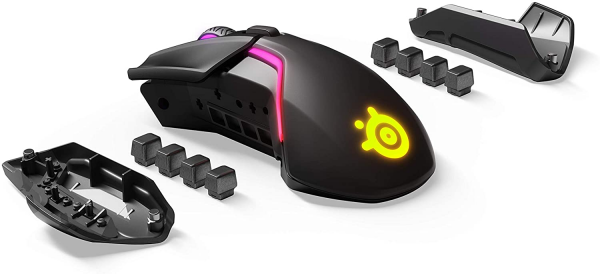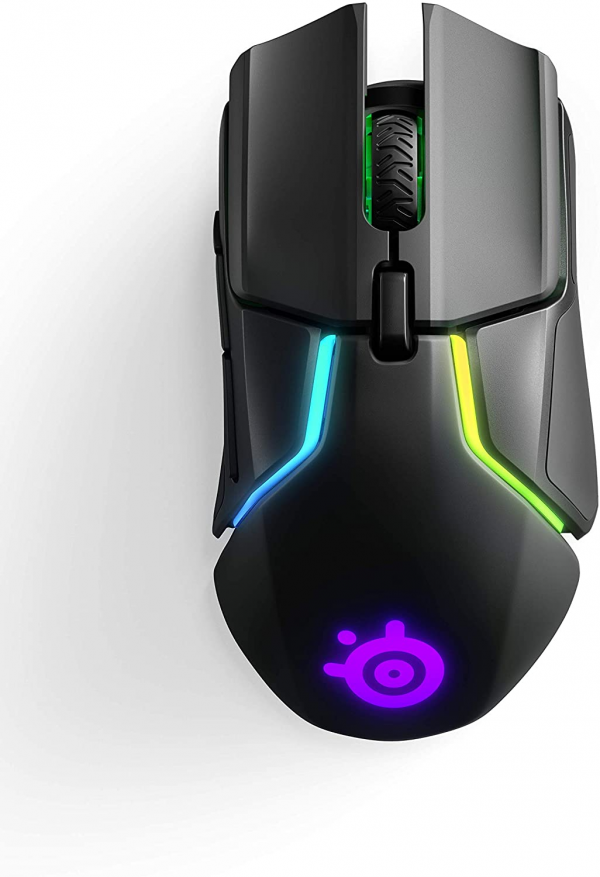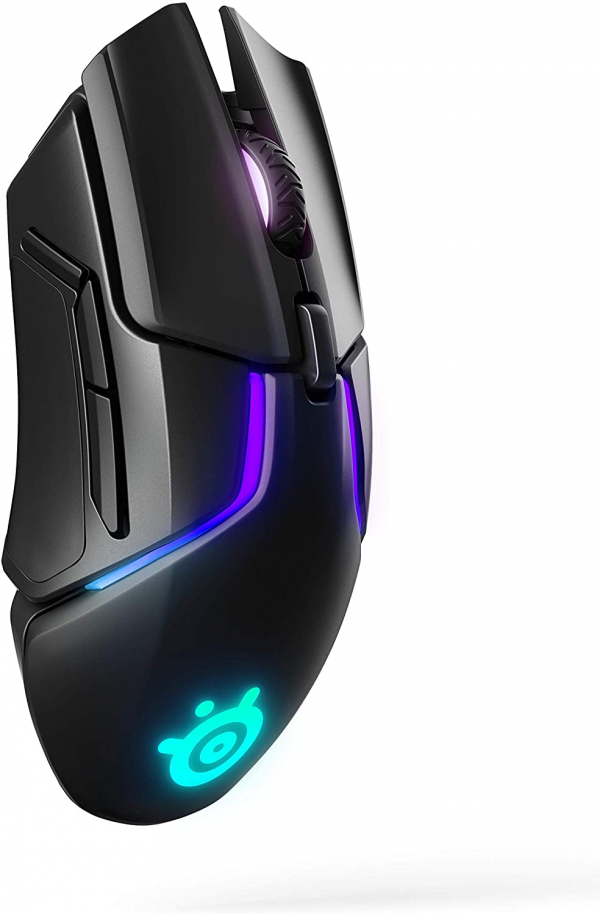SteelSeries
SteelSeries Rival 650: it loses its thread, not its performance
Aprox. 119€ - see price -
See specificationsThe first wireless mouse in the SteelSeries gaming range, the Rival 650 intends to offer as good performance as its predecessor, the Rival 600, from which it incorporates the design and all the features. What to compete with the latest high-end models from competitors (Logitech, Corsair and Razer ...)?
Positive points
Excellent performance, with as well as wireless.
Comfort of handling.
Good build quality.
Adjustable mass and balance.
The second sensor is not a gadget, although it will not be useful to everyone.
Bad points
121 g empty, this is much more than other last generation wireless mice.
Only 2 configurable sensitivity levels.
Third slice button not very accessible.
Slightly slippery straight edge.
Our review
Presentation
The Rival 650 is none other than a wireless Rival 600 with 2.4 GHz radio link, battery and detachable cable. This is done at the cost of a logical increase in its total mass, SteelSeries not having seen the other components and materials of its mouse. However, it costs 40 € more for this 650 which thus appears at 129.99 €.

Precision
In electronics, SteelSeries keeps its TrueMove3 + sensor duo here, consisting of an optical sensor signed PixArt and another optical sensor specifically dedicated to the measurement of lifting height. This allows you to choose an extremely low lift-off height, only 0.5 mm, in order to stop the movement of the pointer (or the camera, in a game) as soon as possible when the mouse. Enough to suppress a maximum of parasitic movements when you center your mouse on the carpet, which you do constantly if you use a fairly low sensor sensitivity. Note however that SteelSeries seems to have corrected the concerns that we may have encountered when adjusting the lifting height with certain surfaces during our test of the Rival 600. A counter allows anyway to automatically return to the initial setting after 10 seconds in case setting too low which would cause an unexpected cut.
Apart from this specificity of a second optical sensor, the Rival 650 can rely on its excellent main sensor (TrueMove3 which is also found in the Rival 310 and Sensei 310), capable of absorbing accelerations of 50 g and operating up to at speeds of 8.9 m / s. Unless there is a bionic arm, there is no risk of it dropping out. The 1: 1 optical tracking also ensures faithful capture without acceleration. If it is possible to use very high sensitivities, up to 12,000 dpi, note with satisfaction that SteelSeries itself recommends to be content with a much more reasonable level (below 3,500 dpi, which is already very high for our current monitors, as 4K Ultra HD they are), since this setting has nothing to do with the intrinsic precision of the sensor. Remember that at 12,000 dpi, a movement of less than a centimeter is enough to cover the entire width of an Ultra HD screen - in a first-person game, this results in a very large camera rotation. In such conditions, goodbye precision.
Let's finish with a key point for this Rival 650: the quality of its wireless connection. We simply did not notice any latency or interference with this 2.4 GHz radio transmission which is done with the same frequency of 1000 Hz as wired. Whether you connect the wire or not, you benefit from the same performance, without loss of information. However, who says high performance often says relatively large energy consumption and this is true here since the autonomy is limited to 24 hours of use. In comparison, Logitech achieves twice with its G Pro Wireless thanks to a fine management of consumption up to the sensor level, but we can imagine that with two SteelSeries sensors was going to have a hard time matching the Swiss mouse in the matter. Plenty of things to play until exhaustion, however, especially as any reasonable player can choose to recharge their mouse for a short break, the Rival 650 regaining no less than 10 hours of autonomy after a charge of only 15 minutes thanks to its fast charge capacity . Finally, when it comes to saving energy, the mouse goes to sleep automatically and you can activate an option of "intelligent illumination mode" which turns off the backlight when the mouse is moving.

Conclusion
If one might be tempted to write that the Rival 650 is just a Rival 600 that can operate wirelessly, the 25 g that separate the two mice undermines this claim. Nevertheless, the 650 manages to retain the first-rate performance of its wired counterpart and we can therefore only advise it in the same way ... if we are not particularly looking for lightness.

Specifications
Reviews


Not good for small hands
I really wanted to like this. But I returned it.
The thing that bothered me the most are the following:
1) Given I have small hands, reaching for the buttons towards the front of mouse was difficult. It forced me to shift my palm upwards and caused lack of control.
2) The buttons on the bottom were really a nuisance playing FPS games. I would often times hit these buttons by accident from way too much hand shifting. I really wanted to use these buttons and enabled them. But because of the hand position changes, I could never avoid it.
3) The back button is way too large. This could have been divided into two separate buttons.
Fancy advertising, cheap gaming mouse
I used this "gaming mouse" for 13 months now, and at just about 6 months the many issues started occuring. For one, the right click stop registering consistently; meaning that I would have to press down really hard on it for it to execute. This presisted for a few weeks then stopped (or I just stopped noticing). Since 3 months ago, the mouse began overheating, to the point where it started to slightly burn my hand. And now, I'm attempting to RMA the mouse. And despite opening a ticket and being approved the RMA in August, apparently now its too late. Now do you really want to purchase from a company who willfully screws over a customer to save $ 45? I'd stay away from Steelseries; I tried their Siberia 800 (overpriced flimsy plastic) and made the mistake of trying one of their flagship gaming mice. Never again Steelseries.